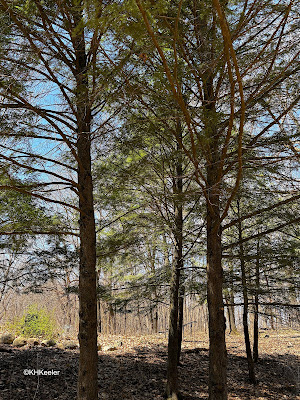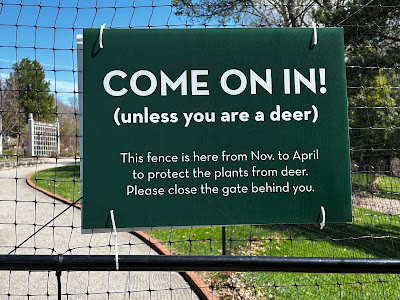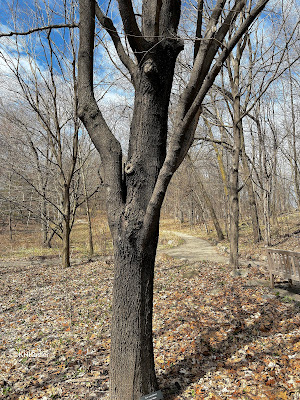I visited the Minnesota Landscape Arboretum, Chaska MN (website), at the end of April. I had heard about it for years and I had traveled with them on several excellent garden tours, so I was eager to see it. I found it was much more than I had expected.
 |
a magnolia in flower
|
Alas, I took few photos on an orientation loop, expecting to return to take pictures later in the day. But, on my own I walked very slowly, stopping over and over for plants I saw, and never got back to the Sculpture Garden--there were all sorts of grand art pieces on the hill that I wanted to investigate--the Glass House and Conservatory with all the amazing tropical plants--the Japanese Garden--I love the aesthetic of Japanese gardens--and more. There is a lot to do and see at the Arb.
Late April is pretty early in the spring in Minnesota. It was chilly, but small spring flowers, squill and others, were blooming profusely.
 |
squill (not sure which one), from Europe, now a weed,
but very pretty nevertheless |
The Arb showcases the natural habitats of the region. Enticing trails lead through the forests. Note that there is a bench, too. It felt very calm and quiet and yet a surprising number of walkers passed me, talking softly.
The trail passed tallgrass prairie, restored years ago, another local ecosystem.
The Arb was rich in flower beds, showing collections of plants by species or for uses. Alas, this is the only photo I took, and is an edge garden with a nice collection of spring flowering plants and useful plants (such as dyes).
The Arb has rose gardens and a hosta collection and a demo garden of plants to try in one's own garden, an iris collection.... Well, my point is that it is well worth visiting, so go see for yourself.
Originally set up to test trees to grow in Minnesota, it has greatly expanded to testing other plants and providing lots of public education, plus opening its doors as a park and picnic area. And a ski destination
 |
| sign designating a cross country ski trail |
I was intrigued by the maple trees that were being tapped when I was there. I love maple syrup but had only a vague idea how it was done, generally from old paintings of people carrying buckets through the snow. Here taps were plastic, draining sap into plastic hoses that ran downhill to a collecting point. Nobody was tending it when I went by, just a series of narrow blue plastic hoses in the forest. The Arb sells its maple syrup, just as it does the produce from gardens and fruit trees. It is more convincing that they grow and refine excellent varieties if you can taste the bounty.
 |
| tapping maple tree to make maple syrup |
 |
| maple sap collection for maple syrup |
I find trees hard to photograph, so did not take portraits of all the tree species planted to see how they would do in Minnesota. But here is one that caught my eye;
 |
| sign about hemlocks |
The hemlocks were planted in 1960, a species reaching the western edge of its range in Minnesota. So here they were, big handsome trees. I admit to a fondness for eastern hemlocks, though I haven't lived near one in decades.
 |
| eastern hemlock (Tsuga canadensis) |
And, finally, the Arb had good signs throughout. Some naming the plants, some explaining the garden you were visinting, some informational, some with activities for children.
A good arboretum or botanical garden helps even professional botanists like me learn more about plants. The signs often gave me information I did not know. And I appreciate that good signs are difficult--plants move, plants die, weather destroys signs--and when in good shape, signs are ever so helpful.
I spent hours looking at plants and taking photos (previous blogs
forest;
prairie) and hardly got started. I am planning my return for summer of 2026...
Comments and corrections welcome.














No comments:
Post a Comment